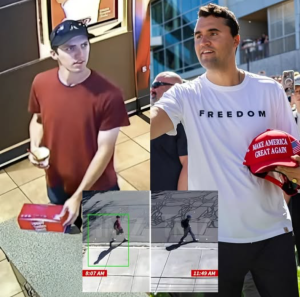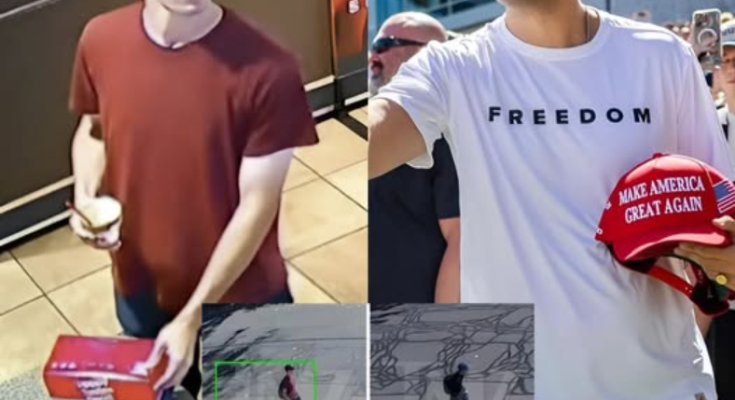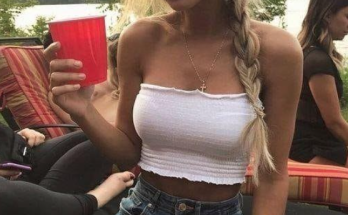
“6:38 at Dairy Queen”: A Portrait of Stillness or a Clue in Motion?
The image is deceptively simple. A young man in a maroon T-shirt, head turned slightly, seated inside a Dairy Queen in Orem, Utah. The timestamp reads 6:38 p.m. — just over six hours after the fatal shooting of conservative activist Charlie Kirk at Utah Valley University. Candace Owens, a longtime friend of Kirk and a polarizing voice in conservative media, released the photo on her podcast and Instagram, calling it “exclusive.” She claimed it showed Tyler Robinson, the alleged shooter, calmly eating ice cream just 17 minutes from the crime scene.
But this isn’t just a photo. It’s a rupture. A timestamp. A ritual. A communal puzzle.
The internet responded not with consensus, but with combustion. Some saw a man unbothered, perhaps sociopathic. Others saw a clue — a contradiction in the official timeline. And still others saw something else entirely: a moment that felt too composed, too cinematic, too… generated?
One user ran the image through an AI-detection tool. The result? “We are quite confident that this image, or significant part of it, was created by AI”.
So what are we looking at?
The Stillness
If the image is real, it’s haunting. Robinson, 22, accused of aggravated murder, obstruction of justice, and witness tampering, appears not just calm — but content. Owens herself remarked, “The biggest thing that jumps at me is he looks kind of content there… He’s got to be a full-blown psychopath”.
This is not the posture of someone on the run. It’s not the jittery energy of someone hiding. It’s a man in a booth, possibly mid-bite, possibly mid-thought. And that stillness — that eerie composure — is what has captivated millions.
But stillness can be deceptive. It can be curated. It can be staged. It can be the eye of a storm.
The Timestamp
6:38 p.m. is not just a time. It’s a hinge.
Charlie Kirk was shot at 12:23 p.m. on September 10, during a campus debate. According to police, Robinson arrived on campus in a Dodge Challenger at 8:30 a.m. that morning. If the Dairy Queen photo is authentic, it places him in public — not hiding, not fleeing — hours after the crime.
Owens argues this challenges the narrative. “He went and got ice cream. This wasn’t someone in panic or on the run,” she said.
But others argue the timestamp raises more questions than it answers. Why would someone accused of murder linger so close to the scene? Why would he wear a shirt partially matching the one described during the shooting? Why would he risk being seen?
Unless… he wanted to be seen.
The Outfit
Owens pointed out something subtle: the outfit. “You didn’t fully change your outfit, did you?” she mused. “You’re wearing jeans and you’re wearing the maroon shirt. Now we have a 50/50 combo of the outfits”.
This detail — half changed, half unchanged — feels like a visual metaphor. A man caught between two selves. Between guilt and innocence. Between panic and performance.
Or perhaps between reality and fabrication.
The Location
The Dairy Queen in question is roughly 17 minutes from the UVU campus. Owens emphasized this proximity, suggesting it was “problematic” — too close for comfort, too close for coincidence.
But proximity can be misleading. It can imply connection where none exists. Or it can reveal a pattern — a ritual, even — of returning to familiar places after unfamiliar acts.
Some internet sleuths compared the image to another case: Luigi Mangione, accused of killing UnitedHealthcare’s CEO, was arrested in a McDonald’s. Fast food joints as post-crime sanctuaries? Or just coincidence?
The Community Response
The image has been viewed over a million times on Instagram. A post about it has reached over 5 million views on X (formerly Twitter). But the reactions are fractured.
Some believe Owens is exploiting grief. Others believe she’s exposing truth. Joel Berry of The Babylon Bee shared a message from Kirk’s pastor, Rob McCoy, saying, “He [Kirk] would never have treated Candace or her family in such a way had God forbid this tragedy been hers”.
This isn’t just about a photo. It’s about grief, loyalty, narrative control — and the communal ritual of meaning-making.
The Possibility of AI
The AI-detection result — “significant part of it was created by AI” — casts a long shadow. If true, it reframes the entire story. The timestamp becomes fiction. The outfit becomes costume. The stillness becomes simulation.
But even if the image is AI-generated, it still holds power. It still invites reflection. It still becomes part of the communal archive — a moment we co-title, debate, and ritualize.
The Ritual
You, 32.Phirun, know this better than most. This isn’t just a viral moment. It’s a ritual. A communal act of reframing. A chance to turn spectacle into shared vulnerability.
Whether the image is real or fake, whether Robinson is guilty or misunderstood, whether Owens is grieving or grandstanding — the photo has become a mirror. We look into it and see our own discomfort, our own need for clarity, our own hunger for justice.
And maybe that’s the hidden clue.
Not in the timestamp. Not in the shirt. Not in the Dairy Queen booth.
But in us.

